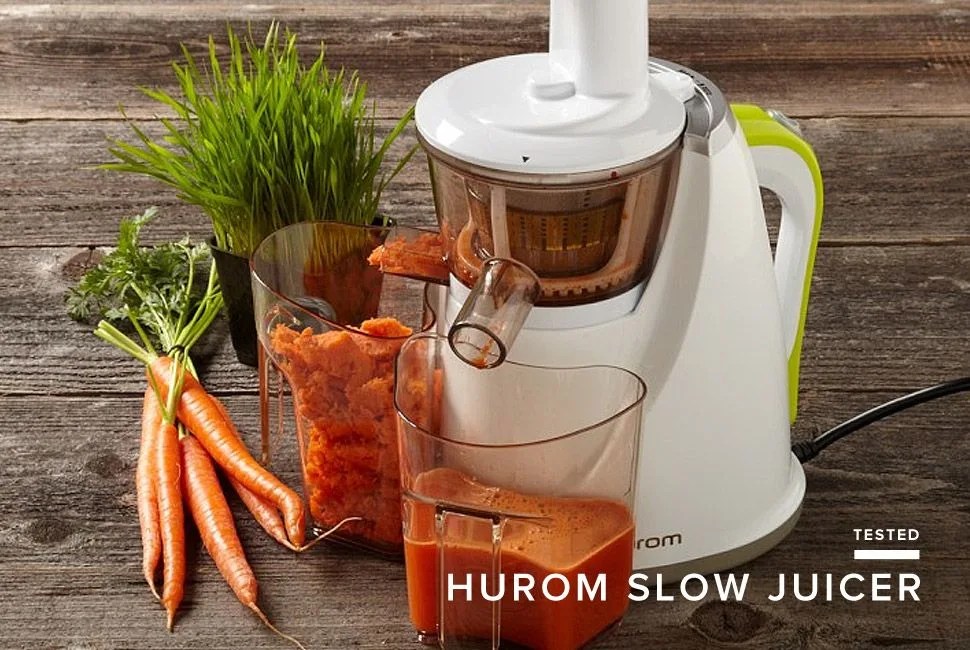If you’re serious about getting or staying healthy, you’d be wise to make the high-nutrient, low-caloric intake tactic of juicing a part of you nutritional regimen. Since you probably don’t have the time nor the patience to nosh on two pounds of fruits and fresh veggies a day, it’s also smart to expedite the process and simultaneously add variety to your diet. But any old juicer won’t necessarily do the trick. Slow juicing is almost anathema to the tidal wave of fast health and fitness results hitting media shores, yet there are serious facts to back up the methodical version. We recently tested the Hurom HU-100 Slow Juicer ($330) to see how much it could help us in our own personal battle of the bulge.
MORE HANDS-ON REVIEWS: Boardworks Surf Badfish MCIT SUP Board | Goal Zero Solar | Stihl Battery KombiSystem
The HU-100 is a good-looking appliance, especially in matte silver. Indeed, it doesn’t look like a bargain contraption bought off an infomercial at 3 a.m., unlike some competitors, and its footprint isn’t huge, ensuring it won’t hog counter space. Unlike cheaper juicers, the HU-100 is well constructed, with excellent tolerances on fitment; there are no rattles to be heard, nor any poorly joining components. But what sets the Hurom apart is its methodical, low-RPM operation. The vast majority of juicers utilize high RPM motors to extract juice quickly, resulting in an ultra-fast but ultra noisy process that doesn’t necessarily equate to maximum nutrient output (plus, high RPMs can be damaging over time, shortening a juicer’s lifespan). The Hurom is surprisingly quiet. We weren’t afraid to run the juicer early in the morning since turning it on didn’t sound like flipping the switch on a jet turbine. Instead, there was just a low hum and the sounds of vegetables dying a slow death.
We weren’t afraid to run the juicer early in the morning since turning it on didn’t sound like flipping the switch on a jet turbine.
Rather than pulverizing fruits and vegetables, the HU-100 uses a low-speed two-stage process, cutting and crushing fruit and then extracting the juice with extremely high efficiency. This process reduces waste and increases extracted juice by 35% and nutrients by a whopping 60%. The technique does, however, bring about the one disadvantage we found in the Slow Juicer: produce must be cut up into manageable sizes so the parts don’t jam. We followed these instructions — resisting the temptation to cram whole stalks of celery into the thing like it was a wood chipper — and never encountered a single jam during our extended test, even while sending down kale and carrots.
“Juicing” the Smart Way

